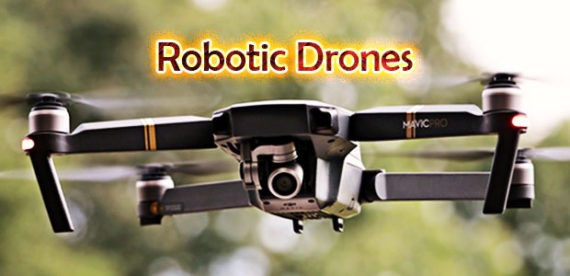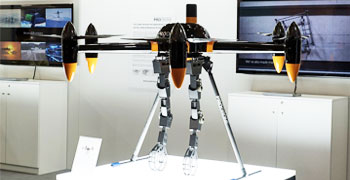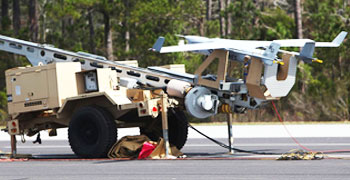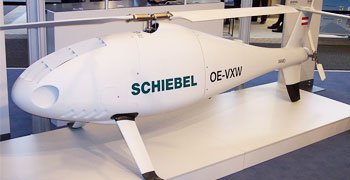A drone is a flying robot. In the technological context, a drone is an unmanned aircraft. The US military and that of other countries have been using huge, expensive, missile-equipped models for a remote strike for some years. Though the explosion of drones in popularity is fairly recent, they have been around in different forms for about one hundred and fifty years. Drone technology started in the year 1849 when the Australian army got the brilliant idea of putting bombs in unmanned balloons and using them for warfare.
Today drones have found their use in diverse applications and those applications are expanding all the time as the technology increases for both artificial intelligence (AI) and robotic hardware and machinery.
What is a Drone?
For some people, when they hear of a drone, many things run through their minds: some picture a type of fixed-wing or multirotor aircraft. While some others may picture a male bee, also known as a drone. Nevertheless, the term ‘drone’ is fairly broad. Drones are technically known as Unmanned Aerial Vehicle (UAV), though others may prefer to call it Remotely Piloted Aircraft (RPA).
From this term, drones have a clear-cut definition. Hence it can be defined as vehicles that fly through the air without an onboard pilot. Though the drones we have today can be controlled remotely from the ground, while others can fly autonomously following a pre-programmed mission.
All the necessary equipment needed for a drone’s operation, which includes ground stations, external flight controllers, and the drone itself is collectively called Unmanned Aerial System (UAS). The specific application determines exactly what is included in the Unmanned Aerial System and how much external control is needed.
There are different types of drones and they come in a variety of shapes, sizes, and functions. There are basically two categories: those used for surveillance and reconnaissance purpose, and those armed with bombs and missiles. Drones have in the past been mostly used in military services, however, they are now becoming useful in civilian applications such as weather analysis, search and rescue, aerial surveying, security and much more. Below are some examples of robotic drones that give an idea of where the technology is headed:
PD6B-AW-ARM
Prodrone, Japan’s specialty commercial drone manufacturer and retailer, has developed the drone, PD6B-AW-ARM, with a set of robotic arms, which can grab and carry objects weighing up to 22 lbs. Apart from delivering cargo, the drone can be sent into hazardous areas to retrieve harmful objects, or employed in rescue operations, such as dropping lifebuoy to a drowning person.
NRQ-21 Blackjack/Integrator
This drone belongs to the US Navy, and it is one of their latest small drones. Boeing Subsidiary Insitu makes the drone, and it can carry a twenty-five pounds payload for 16 hrs. The drone can provide persistent and distant inspection at sea. It can take off from the smallest vessels and has the ability to turn every ship into an aircraft carrier.
S-100 Camcopter
This drone is made by an Australian company, Schiebel. Instead of its usual camera payload, the S-100 Camcopter carries a radar warning system called Sage. The drone picks up radar transmissions from ships, analyzes and identifies them, after that it plots the exact position of the radar emitter. The Sage has the ability to track an opposing task force from long range at sea without itself being noticed.
USV-2600
The USV-2600 is an Unmanned Survey Vehicle from the Defense Research and Development in Canada; it is a 10ft. robotic boat that is used to carry different instruments. These instruments include devices for measuring temperature and underwater current, as well as sonar for mapping the seabed.
The USV-2600 has advanced navigation that keeps it in place better than any human pilot could ever do. It has a vital ability for accurate measurements, and during tests, it stays within a meter of an affixed point for 10 minutes.
Sea Hunter
The Sea Hunter is equipped with a new sensor developed by the ONR: laser-based radar (a LIDAR) that can map the seabed in shallow water. The new sensor or LIDAR is one-tenth the size of the previous systems. The drone will be used for ‘rapid environmental assessment,’ to spot sandbanks, wrecks, reefs, or other submerged hazards that may pose a threat to naval operations. Sea Hunter can be flown from a ship to survey areas that have not been mapped properly quickly.
Relay Unmanned Aerial Vehicle
This drone is used as a communication relay to tie a team of robots together and linking them to a remote base. It can establish a radio communication from a height of a few hundred feet – at far longer range than anything at sea level. The rotary-wing drone can transfer data to and fro an unmanned sub on the surface, and display how marines of autonomous underwater drones can be remotely controlled.
Scan Eagle
This is an older drone made by Boeing Insitu. It was initially developed to track Tuna Fish Schools. Scan Eagle is now used by more than twenty countries with a net capturing system, which makes it easy to use from the ship.
There is much to know about the robotic drone. Many of them are now finding applications in agriculture. With their infrared and other sensors, they can image fields to collect valuable crop data, pollinate crops, or spray crops with pesticides and fertilizers.
This is only the tip of the robotic drone iceberg; we should expect more in the future.



